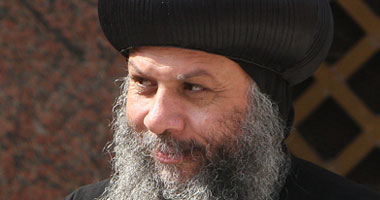 Over a series of four editorials printed last October, I tackled the practices exercised by Minya local authorities against the Copts in the governorate. A file I had received from the bishopric of Maghagha and Adawa in Minya was packed full of details that could be described as collective punishment of the Copts, tantamount to persecution. In words burning with agony and bitterness, the file listed the suffering of the Copts at the hands of the local authorities who regularly suspend granting them building permits to restore or renovate churches, to house charities, or even to build homes, "lest they turn these homes into churches in the future".
Over a series of four editorials printed last October, I tackled the practices exercised by Minya local authorities against the Copts in the governorate. A file I had received from the bishopric of Maghagha and Adawa in Minya was packed full of details that could be described as collective punishment of the Copts, tantamount to persecution. In words burning with agony and bitterness, the file listed the suffering of the Copts at the hands of the local authorities who regularly suspend granting them building permits to restore or renovate churches, to house charities, or even to build homes, "lest they turn these homes into churches in the future".
In Minya: A pledge not honoured
Youseef Sidhom
Opinion
00:08
Sunday ,01 August 2010

Every case cited in the file exposed the tyranny of the local authorities in granting—if ever—building permits direly needed by the Copts. First, application procedures are excessively and unduly complicated. If an applicant perseveres long enough and manages to finally submit all the documents and fulfil all the conditions required, the application would be indefinitely sidelined until it would be ultimately rejected, with no explanation given.
Among the most glaring cases was one which concerned the dire need for a new building to house the bishopric of Maghagha and Adawa since the old building had, over time, deteriorated to the point of threatening lives. An official report by the governorate’s building committee pronounced the building—which housed the church, the bishop’s residence, and administrative offices—beyond restoration and recommended pulling it down. The bishopric accordingly applied, in April 2007, for licence to build a new, bigger building on an adjacent plot of land it owns, to accommodate the needs of the congregation which had considerably grown over the years. Two-and-a-half years later, and following several re-applications, follow-up, and pleading on the part of the bishopric, the governor said he would not allow the existence of two adjacent churches. Even though the decision carried no legitimate or legal justification whatsoever, the bishop had to give in since there was no other way he could erect a new building in the foreseeable future. The congregation felt a bitter sense of injustice; after the arduous attempts and humiliating setbacks, the bishopric was required to demolish the old building and remain without a church until a new one is built. To the obvious question of why the congregation could not go on using the old building, or the bishop his old residence, till a new one was erected the shocking reply was that the authorities did not trust the Copts to demolish the old one—even if they pledged in writing to do so. The Copts, thus, had to be stripped of their church before a new one was built, but the bishop was allowed to keep the old residence temporarily.
The old building was pulled down and the congregation worshipped in a makeshift marquee, yet it appeared there was no end in sight for the humiliation of the Copts. Some five months ago a meeting was convened between the governor, State security officials, and local politicians on one side; and the bishop, a number of senior clerics, and the local Coptic Community Council members on the other. A written decision was reached that, since the Church had abided by its part of the agreement and demolished the old bishopric building, the permits for the new building should be issued.
It is now more than four months since that meeting, with no permit in sight. When Anba Aghathon realised he had been the victim of a vicious trick to demolish the old church without getting a permit to build a new one, he called for an extraordinary meeting for the parish clergy. The meeting was held on 22 July in the marquee the Church used temporarily for worship. The convention sent an urgent call to all the senior State officials concerned, protesting the arrogant injustice inflicted upon the Church, and confirming that the Church had fully executed its obligations—to the point of demolishing the old building—and paid all the fees required.
I know that the details of this catastrophic story is already in the hands of all Sate officials concerned; I print it merely to register a new chapter in the series of collective penalty inflicted on the Copts in Egypt. I refer it to the National Council for Human Rights, which has been staunchly demanding the passage of a unified law for building places of worship. Had such a law been in effect—it is six years now that the bill has been drafted but not placed on Parliament’s agenda—it would have allowed Maghagha and Adawa bishopric to erect its new building without having to go through the humiliation inflicted by an unjustly domineering governor. I place the story before those who claim the time is not right for the passage of such a law. As to when would be the right time; that is an open question.



